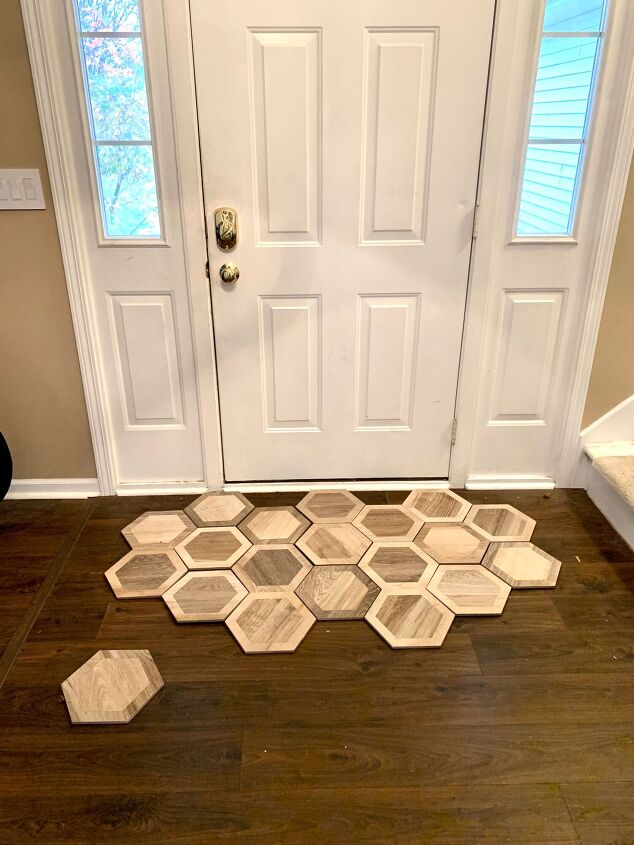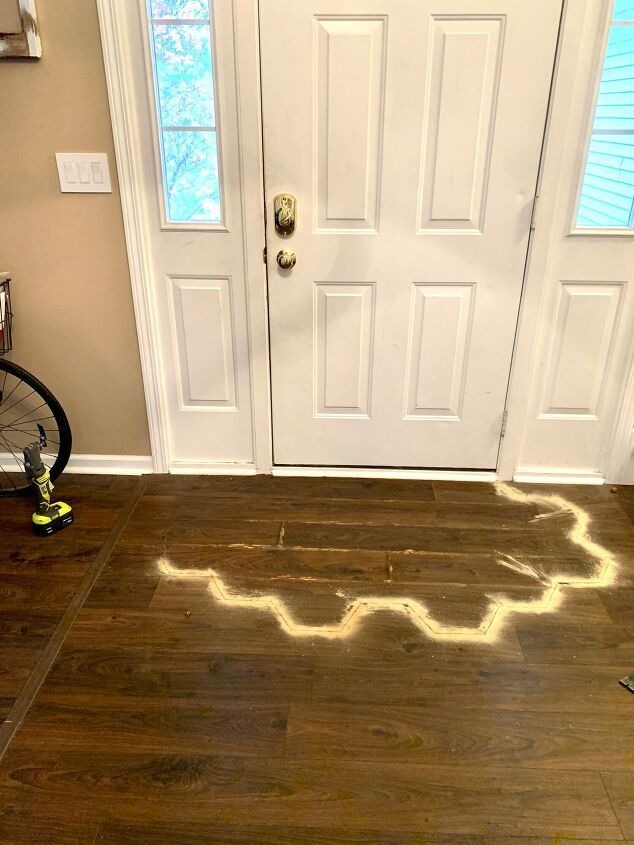Hexagon floor tile (mine is from Mission Stone & Tile)
AquaDefense and/or Schluter membrane
Rapid-setting thin set mortar
Grout
Caulk
Step 1: Plan tile layout and outline. Once my tile arrived, my 4-year-old and I had a grand time planning what shape we’d make the tiled entry. We made some fun shapes, but I ended up laying the tile right over the ruined part of the floor (after I cleaned it as best I could).

I’d guessed correctly (sigh of relief) that we’d only need 1 box. I spaced the tiles exactly how I wanted to grout them, and I made sure to leave out a tile to cut for my filler pieces against our door.
With the tiles down where I wanted them, I took a Sharpie marker and drew right on the floor to make an outline of this plan. I made sure to trace along the tiles’ edge generously, leaving myself some extra space so I could adjust the tiles slightly if I needed. This would also give me room to caulk between the tiles and the existing flooring, just like I would grout the spaces between the tiles themselves.
With this outline done, I carefully moved the tiles back to a pile.
Step 2: Cut out old flooring. This part was messy and gross. But, if your flooring isn’t saturated in cranky old cat spite, you’ll probably be fine. Moving along my traced line, I used my oscillating saw tool to cut the old flooring. This little tool is definitely one of my favorites, and it’s easy to get nice clean cuts in all those hexagon corners.

You can also use a circular saw to cut the long, straight cuts. If you do this, make sure the depth is set to only cut through your flooring and NOT into the subfloor. I used a circular saw thusly when doing our kitchen, and it’s certainly faster! For this project, however, my circular saw was out of commission. 🤦♀️ Oh, well. For all the corners and the places right next to the wall/door, I needed my oscillating tool anyway.
Continue Reading in next page

